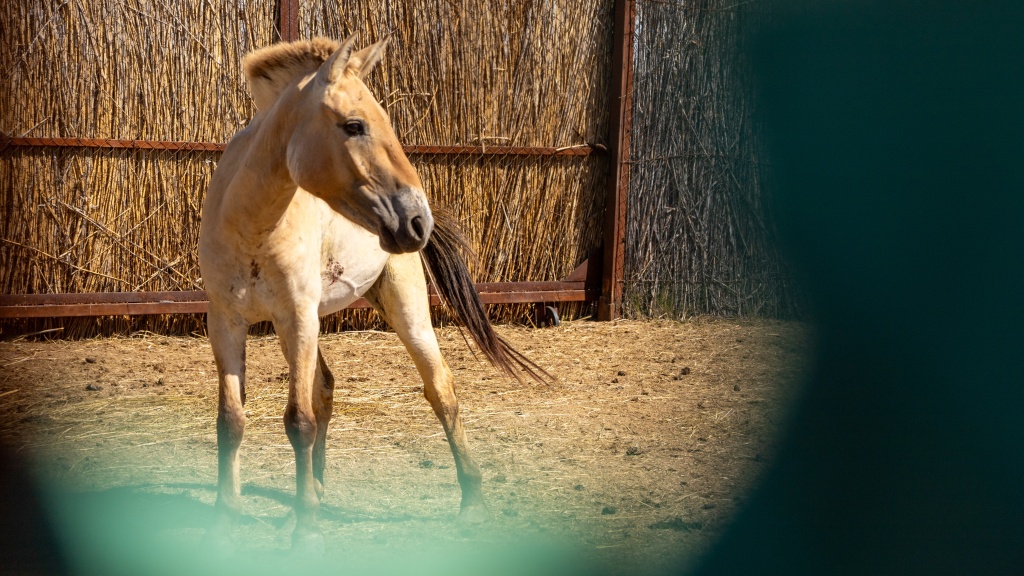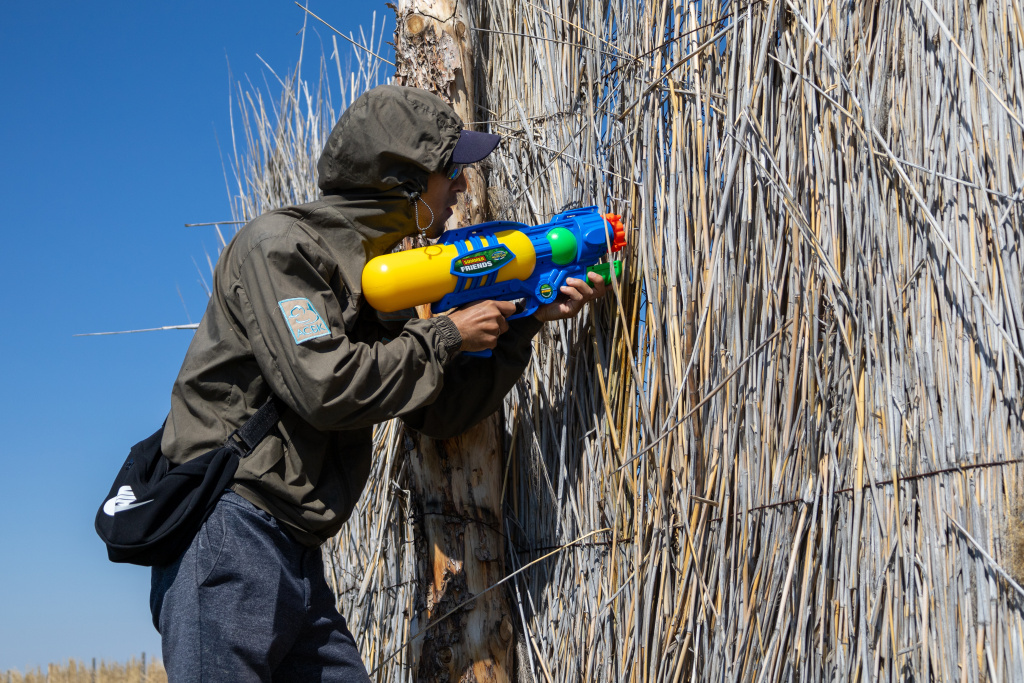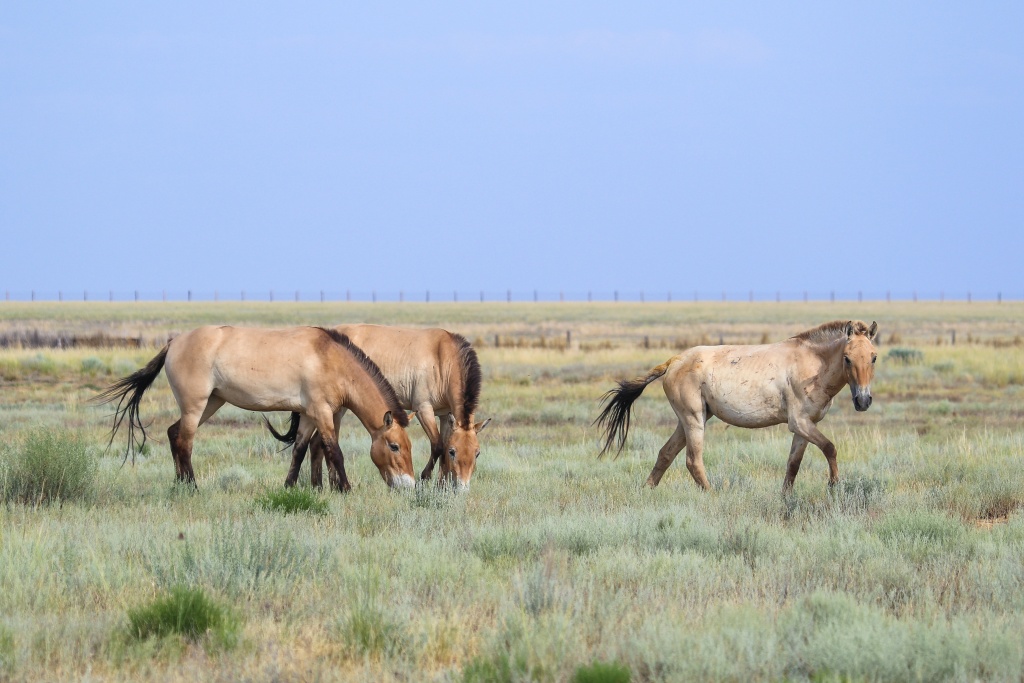Crisis and hope called Zeta II
Miroslav Bobek | 02. 08. 2025
The first Przewalski’s horse to touch the Golden Steppe in central Kazakhstan in hundreds of years was the mare Zeta II in June last year. She was born in spring 2021 in Dolní Dobřejov and was named after a famous mare born at the same place in 1994, who had 12 foals in the Mongolian Gobi and lived there to the respectable age of 24. We had strong hopes that in the Golden Steppe Zeta II would live up to legacy of her famous predecessor; however, she unfortunately became the first Przewalski’s horse for whom we dealt with serious health issues in Kazakhstan.

Zeta II separated in a small enclosure in a photo from the end of May. Photo: Kristýna Čechlovská, Prague Zoo
On Wednesday 14 May this year, less than four weeks before the planned release of last year’s imported Przewalski’s horses from the acclimatization enclosures to the wild, we received a message from Alibi that during a routine check-up an opened, inflamed wound was found in Zeta II’s anus area, infested by insect larvae. The situation looked serious, even more so, because the outdoor temperatures were reaching up to 38 degrees C.
Discussions on diagnosis and next steps were initiated across several countries. A vulvar carcinoma, and even the consideration of transmissible carcinoma, appeared among the possible diagnoses. That would pose a threat not only for Zeta II, but also for other individuals. Therefore, it was clear that the releasing of the horses would have to be postponed, Zeta II would have to be separated and anaesthetized, her wound would have to be checked, treated and samples would have to be taken. The German vet Julia Bohner flew to Kazakhstan for this purpose. She treated Zeta II in anaesthesia for the first time on Monday 19 May.

The vet Daniar Kalijev applies a germicidal solution with insecticide to Zeta II’s wounds from behind a fence. The children’s spray gun proved to be a better solution than professional veterinary equipment due to its range. Photo: Kristýna Čechlovská, Prague Zoo
Fortunately, the hypothesis of Zeta II having a malignant disease was not confirmed. However, Zeta II remained in treatment, and although she was recovering quickly, her release into the wild was out of the question. That is why the stallion Zorro didn’t run out of the acclimatization enclosure to the opened steppe on 4 June with six mares, but only with five. Zeta II should run in the wild next year with the other group of Przewalski’s horses that we brought to Golden Steppe this year.
Zeta II’s diagnosis could be determined based only on the examination of the samples taken. It was acute polymorphonuclear dermatitis, i.e. bacterial skin infection. What was its initial cause we will probably never learn. An idea suggest itself that it might be caused by the toxin pederin of a beetle of Paederus genus. As I wrote in a column published shortly after our return from Kazakhstan, these beetles were very numerous in Alibi during our stay and, in addition to the three employees of our zoological garden, other participants in the project were also affected by dermatitis caused by the toxin the beetles contain. Zeta II could also have crushed the toxic beetle against her skin. The original dermatitis, caused by pederin, and eventually by bacteria that produce the toxin for the beetles, could later get worse by a subsequent infection caused by other bacteria and ectoparasites. But as I said, it is just a guess.
Whichever way it happened, Zeta II has now been already doing well for a long time—and our hope that she would be a worthy successor of the first bearer of this name has returned.

Grace, Zina II, Zeta II. Photo: Albert Salemgarejev, Prague Zoo








